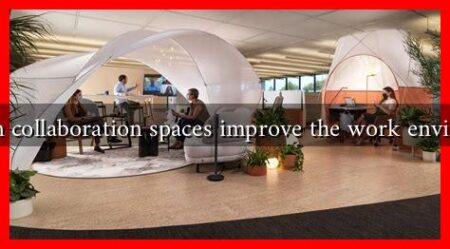-
Table of Contents
- What Strategies Can Enhance the Use of Open Spaces?
- Understanding the Importance of Open Spaces
- Strategies to Enhance Open Space Utilization
- 1. Community Engagement and Participation
- 2. Programming and Events
- 3. Enhancing Accessibility and Amenities
- 4. Incorporating Nature-Based Solutions
- Conclusion
What Strategies Can Enhance the Use of Open Spaces?
Open spaces, such as parks, plazas, and community gardens, play a crucial role in urban environments. They provide recreational opportunities, promote social interaction, and contribute to the overall well-being of communities. However, many open spaces remain underutilized due to various factors, including poor design, lack of amenities, and insufficient programming. This article explores effective strategies to enhance the use of open spaces, drawing on case studies and expert insights.
Understanding the Importance of Open Spaces
Open spaces are vital for urban ecosystems and community health. They offer numerous benefits, including:
- Environmental Benefits: Open spaces help improve air quality, reduce urban heat, and support biodiversity.
- Social Benefits: They serve as gathering places that foster community engagement and social cohesion.
- Health Benefits: Access to green spaces encourages physical activity and mental well-being.
According to a study by the National Institutes of Health, individuals living near parks are more likely to engage in physical activities, leading to improved health outcomes.
Strategies to Enhance Open Space Utilization
1. Community Engagement and Participation
Involving the community in the planning and design of open spaces is essential. When residents have a say in how their local parks and plazas are developed, they are more likely to use and care for these spaces. Strategies include:
- Conducting surveys and focus groups to gather input on desired features.
- Hosting community workshops to brainstorm ideas and solutions.
- Creating volunteer programs for maintenance and programming.
For example, the New York City Parks Department has successfully engaged communities in the design of local parks, resulting in spaces that reflect the needs and desires of residents.
2. Programming and Events
Regular programming and events can significantly increase the use of open spaces. Activities such as concerts, movie nights, fitness classes, and farmers’ markets attract diverse groups of people. Consider the following:
- Organizing seasonal events that celebrate local culture and traditions.
- Offering fitness programs, such as yoga or tai chi, to promote health and wellness.
- Creating family-friendly activities that encourage participation from all age groups.
The Trust for Public Land has documented how cities that host regular events in parks see increased foot traffic and community engagement.
3. Enhancing Accessibility and Amenities
Accessibility is a critical factor in the utilization of open spaces. Ensuring that parks are easily reachable and equipped with necessary amenities can make a significant difference. Key considerations include:
- Improving public transportation access to parks.
- Installing walking and biking paths to encourage active transportation.
- Providing amenities such as restrooms, seating, and water fountains.
For instance, the Portland Parks and Recreation department has focused on enhancing accessibility in their parks, resulting in increased usage among diverse populations.
4. Incorporating Nature-Based Solutions
Integrating nature-based solutions into open space design can enhance their appeal and functionality. This includes:
- Creating green roofs and walls to improve aesthetics and biodiversity.
- Implementing rain gardens and bioswales to manage stormwater effectively.
- Planting native vegetation to support local wildlife and reduce maintenance costs.
Case studies from cities like Chicago demonstrate how nature-based solutions can transform urban landscapes, making them more inviting and sustainable.
Conclusion
Enhancing the use of open spaces requires a multifaceted approach that prioritizes community engagement, programming, accessibility, and nature-based solutions. By implementing these strategies, cities can create vibrant, inclusive, and sustainable open spaces that meet the needs of their residents. As urban areas continue to grow, the importance of well-utilized open spaces will only increase, making it essential for planners and policymakers to prioritize these strategies for the benefit of all.


